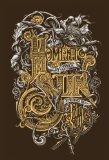Summary | Excerpt | Reading Guide | Reviews | Beyond the book | Read-Alikes | Genres & Themes | Author Bio

I have been reading Tom Wolfe for decades, from non-fiction work such as The Electric Kool-Aid Acid Test to his first novel, The Bonfire of the Vanities, through A Man in Full to this, his latest, Back to Blood. The manic rhythms and hip verbosity of his writing are instantly recognizable even to the point of repeating various tropes. His propensity for naming and counting the musculature of male characters as well as the delights of female bodies shows up in every book. This book was no different. Though I have acquired a taste for his methods, many were the times I threw down Back to Blood and vowed not to pick it up again. For instance, he inserts a cartoon-like soundtrack into his prose:
"SMACK the Safe Boat bounces airborne comes down again SMACK on another swell in the bay bounces up again comes down SMACK on another swell and SMACK bounces airborne with emergency horns police Crazy Lights exploding SMACK in a demented sequence on the roof SMACK..."
This goes on for 10 pages in the first chapter. Annoying! I was weary of the same old stuff and wondered if Wolfe hadn't passed his prime. I worried that his use of sexual language went outside the realm of what BookBrowse could recommend to its readers.
And yet – I picked the book back up each time I thought I was done with it. Why?
Back to Blood centers on Nestor Camacho, a 25-year old, second generation Cuban clawing his way up in the Miami police force. After an utterly manic and heroic feat, during which he saves a Cuban refugee only to have the poor fellow sent back to Cuba, not only does Nestor lose the respect of the Cuban population for not being able to save the refugee from deportation, but his girlfriend leaves him too. All in one day. Magdalena doesn't dump Nestor for betraying their people though. She has moved in with her boss, a psychiatrist who treats porn addicts, including one of the richest and most powerful businessmen in Miami. Magdalena is lusting after the luxury of sleek automobiles, fancy parties and the attention her voluptuous Latina beauty elicits. A third character, John Smith, is an ambitious young white reporter with a Yale degree and his journalist idealism intact. John is the reporter who is sent to interview Comacho after his heroic feat.
Miami is a city where African Americans, Cubans, and various other Latinos outnumber Caucasians. In Wolfe's Miami, this Latino and African-American majority lives in a continuous state of mocking the white population while, at the same time, wanting what they have. Miami's immigrant base supports an apex of wealthy whites who, most recently, have erected an art museum, funded by contributions and filled with what are rumored to be copies of famous, priceless paintings. Nestor Camacho and John Smith form an alliance as they sleuth their way through Russian oligarchs and gangsters to get to the truth about this art scandal. Will their rash and youthful bravado bring down the corrupt establishment? Or will money, privilege, white skin and crime prevail?
This is why I returned, again and again, to Back to Blood. This is why I picked the book back up, opened to the page where I had left off, and continued to read. Yes, the novel is about immigration and sex, Miami and sex, art crime and sex, city politics and sex... oh, and also manhood...and sex. But it was the plot that drew me back; my curiosity as to where Tom Wolfe was going with this story and what would happen to the characters, especially Nestor Camacho, Magdalena, and John Smith. They represent the new blood of our times; the generation willing to move beyond race and create the next version of their city. We see Miami through their eyes, even if they too often sound like extensions of the author rather than fleshed out characters. Critics abound who complain that Wolfe does not begin to measure up to the best literary authors. To me that would be like complaining that Tom Clancy doesn't write good romance. Wolfe freely admits to writing "realism" and does it so well that some readers take him much too seriously, missing the fact that he is mostly making fun of us.
Wolfe tells a great story and if rumors about the size of his advance for Back to Blood are remotely true, he doesn't write for the critics. He writes to give his readers a good, rollicking time. And he does.
![]() This review was originally published in The BookBrowse Review in November 2012, and has been updated for the
July 2013 edition.
Click here to go to this issue.
This review was originally published in The BookBrowse Review in November 2012, and has been updated for the
July 2013 edition.
Click here to go to this issue.

If you liked Back to Blood, try these:

by Hari Kunzru
Published 2013
Viscerally gripping and intellectually engaging, Gods Without Men is, above all, a heartfelt exploration of the search for pattern and meaning in a chaotic universe.

by John Sayles
Published 2012
It's 1897. Gold has been discovered in the Yukon. New York is under the sway of Hearst and Pulitzer. And in a few months, an American battleship will explode in a Cuban harbor, plunging the U.S. into war... This is history rediscovered through the lives of the people who made it happen.
Your guide toexceptional books
BookBrowse seeks out and recommends the best in contemporary fiction and nonfiction—books that not only engage and entertain but also deepen our understanding of ourselves and the world around us.